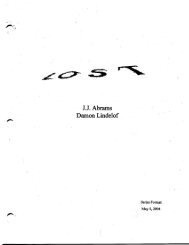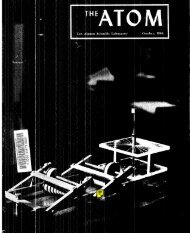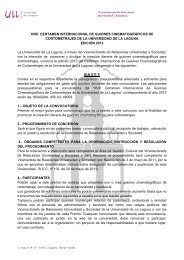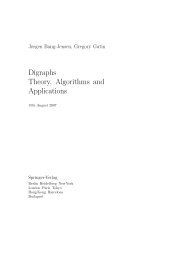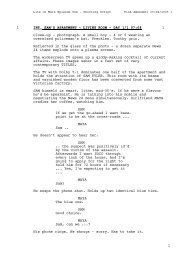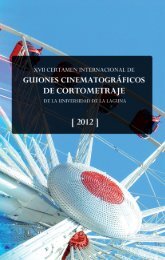You also want an ePaper? Increase the reach of your titles
YUMPU automatically turns print PDFs into web optimized ePapers that Google loves.
[Ulalhematics in<br />
porpelual motion<br />
It really does keep going,<br />
and going, and going . . .<br />
by Anatoly Savin<br />
=o<br />
o<br />
=<br />
x<br />
=o<br />
HE WORDS "PERPETUAL<br />
motion" (p erp etuum mobile in<br />
Latin) are usually associated<br />
with a machine like the one<br />
you see in figure 1. According to the<br />
inventor's conception, this wheel<br />
with several balls rolling inside<br />
must not only rotate for an infinitely<br />
long time, it can also set in motion<br />
other machines-looms, lathes, and<br />
so on. By the time we graduate from<br />
high school we all know that such a<br />
machine can't work, because it<br />
would contradict the law of conservation<br />
of energy. Yet year afteryear<br />
academies of sciences the world<br />
over receive hundreds of new (and<br />
not new) designs for such machines.<br />
Physicists call them "perpetual engines<br />
of the first sort." So-are there<br />
"perpetual engines of the second<br />
sort"? Yes, there are. And that's<br />
what I'm going to discuss here.<br />
Here's an idea for such an engine.<br />
Suppose we have two equallyheated<br />
bodies. As it works, the engine<br />
transfers some heat from one body<br />
to the other without expenditure of<br />
energy/ and then obtains kinetic<br />
energy by means of a heat engine<br />
that uses the temperature difference<br />
thus created. The work of the heat<br />
engine leads to a leveling of the temperatures<br />
of the two bodies, so the<br />
entire process can be started again:<br />
heat is transferred from one body to<br />
the other, work is extracted ftom the<br />
temperature drop-and so on to infinity,<br />
A perpetual engine of the second<br />
sort doesn't contradict the law of<br />
conservation of energy. In this case,<br />
energy neither appears nor disappears-it<br />
merely passes from one<br />
body to the other and then is spent<br />
in the heat engine to perform some<br />
work. In so doing, the temperature<br />
of both bodies becomes lower than<br />
it was initially, but this loss can be<br />
compensated by the heat of the surroundings.<br />
However, there is another law<br />
that prevents the construction of a<br />
perpetual engine of the second sort.<br />
The idea of this law first appeared in<br />
works by the prominent French<br />
physicist and engineer Sadi Carnot,<br />
a son of the outstanding figure in<br />
the French Revolution and weliknown<br />
mathemati cian Lazare C ar -<br />
not. Later it was developed by the<br />
English scientist William Thomson<br />
and the German physicist Rudolph<br />
Clausius. This law is called the second<br />
law of thermodynamics and<br />
reads as follows: It is impossible to<br />
transfu heat from one body to another<br />
without expenditure of energy<br />
if the temperature of the first body<br />
is no higher than that of the second.<br />
This prohibition doesn't look all<br />
that convincing. Does it always<br />
work? The great English physicist<br />
|ames Clerk Maxwell conceived of a<br />
device, called Maxwell's demon, intended<br />
to refute this law. Imagine a<br />
box divided in half with a partition<br />
that has a small hole in it and a " demon"<br />
sitting near the hole. FiIl the<br />
box with any gas and ask the demon<br />
to let only fast molecules from the<br />
left half of the box into the right half<br />
and leave allslow molecules in the<br />
left half. Since the temperature of a<br />
gas is characterized by the average<br />
Figure 1<br />
ffiD<br />
0lJAirrllrir/ttAIlJBt



